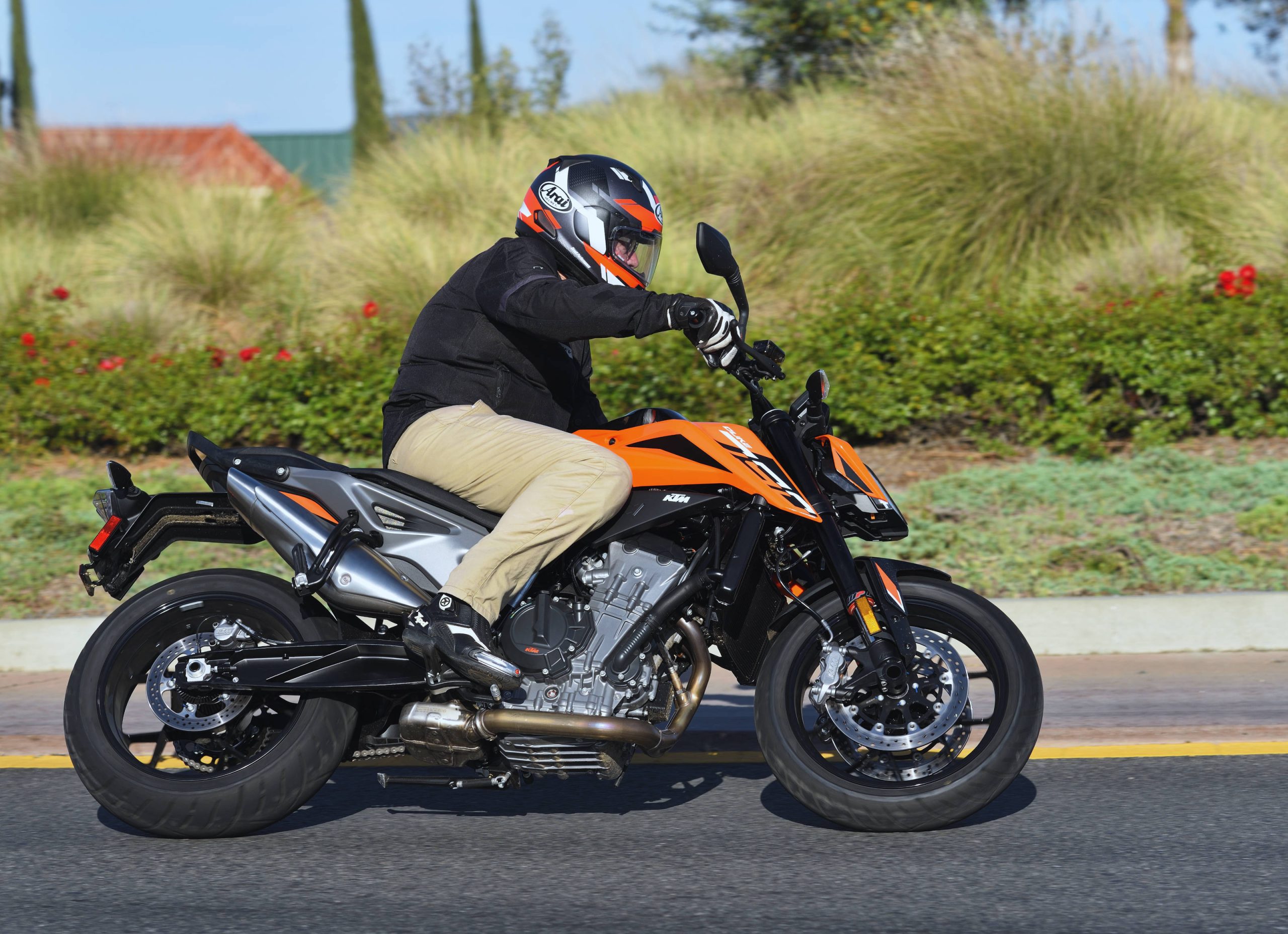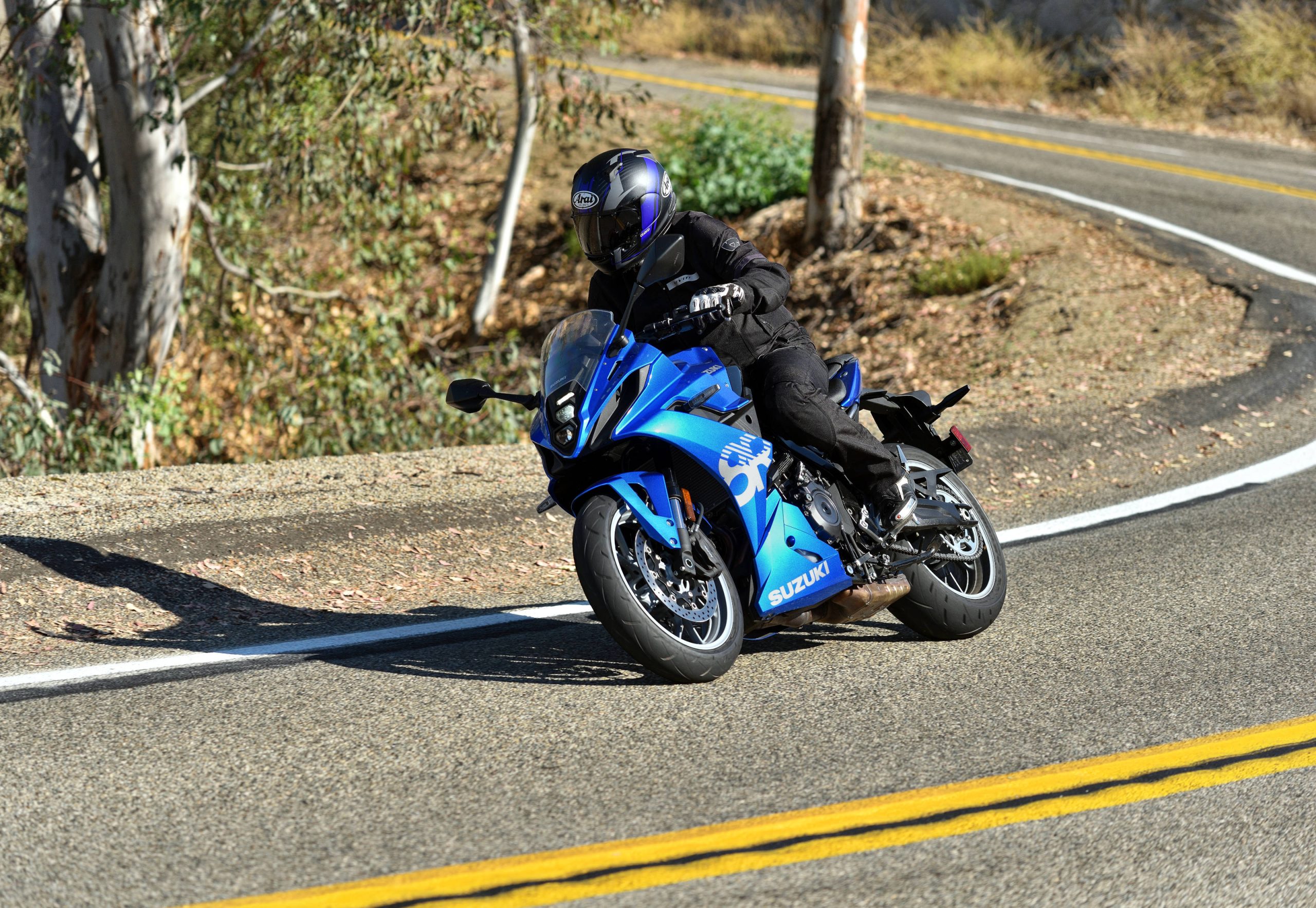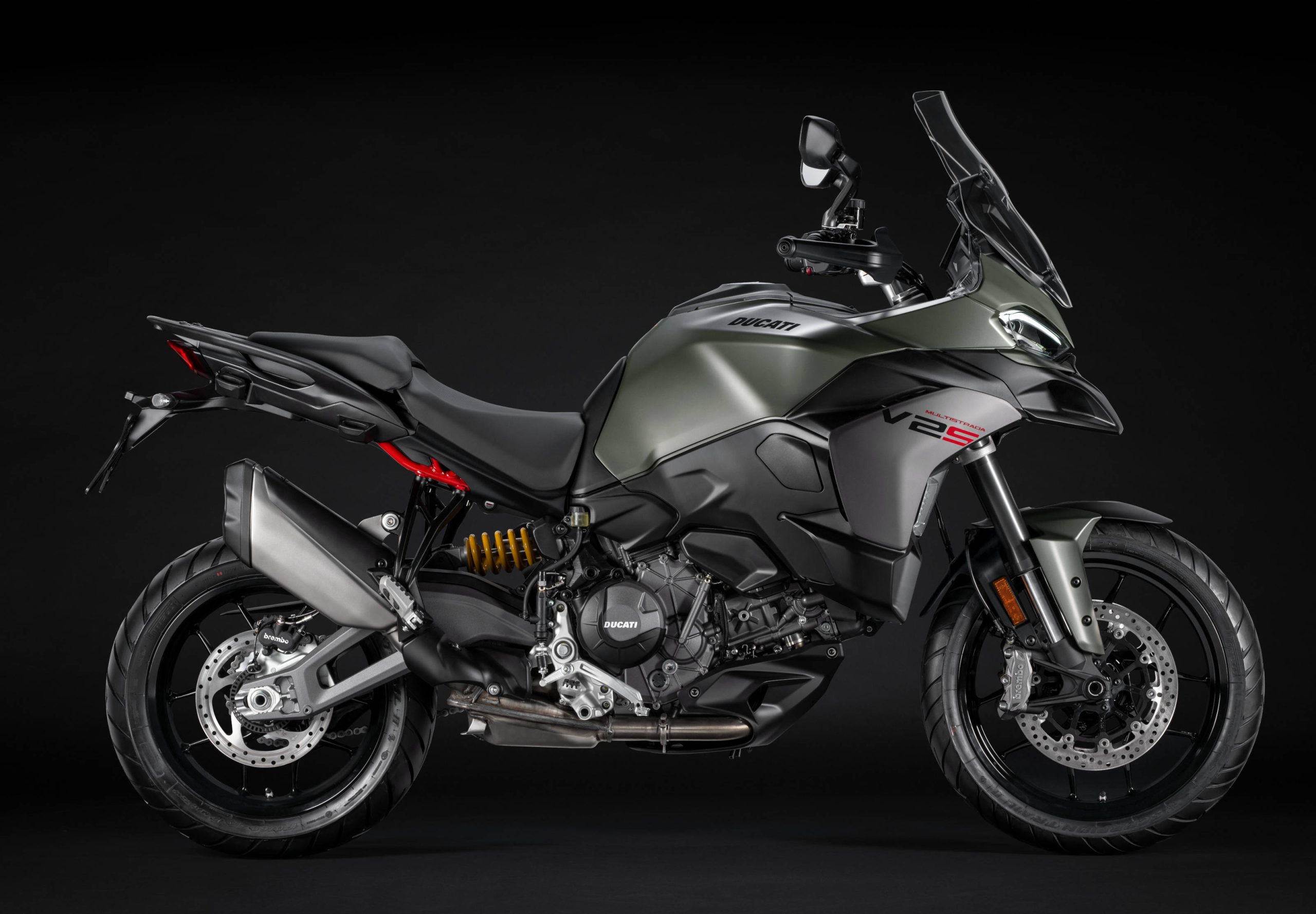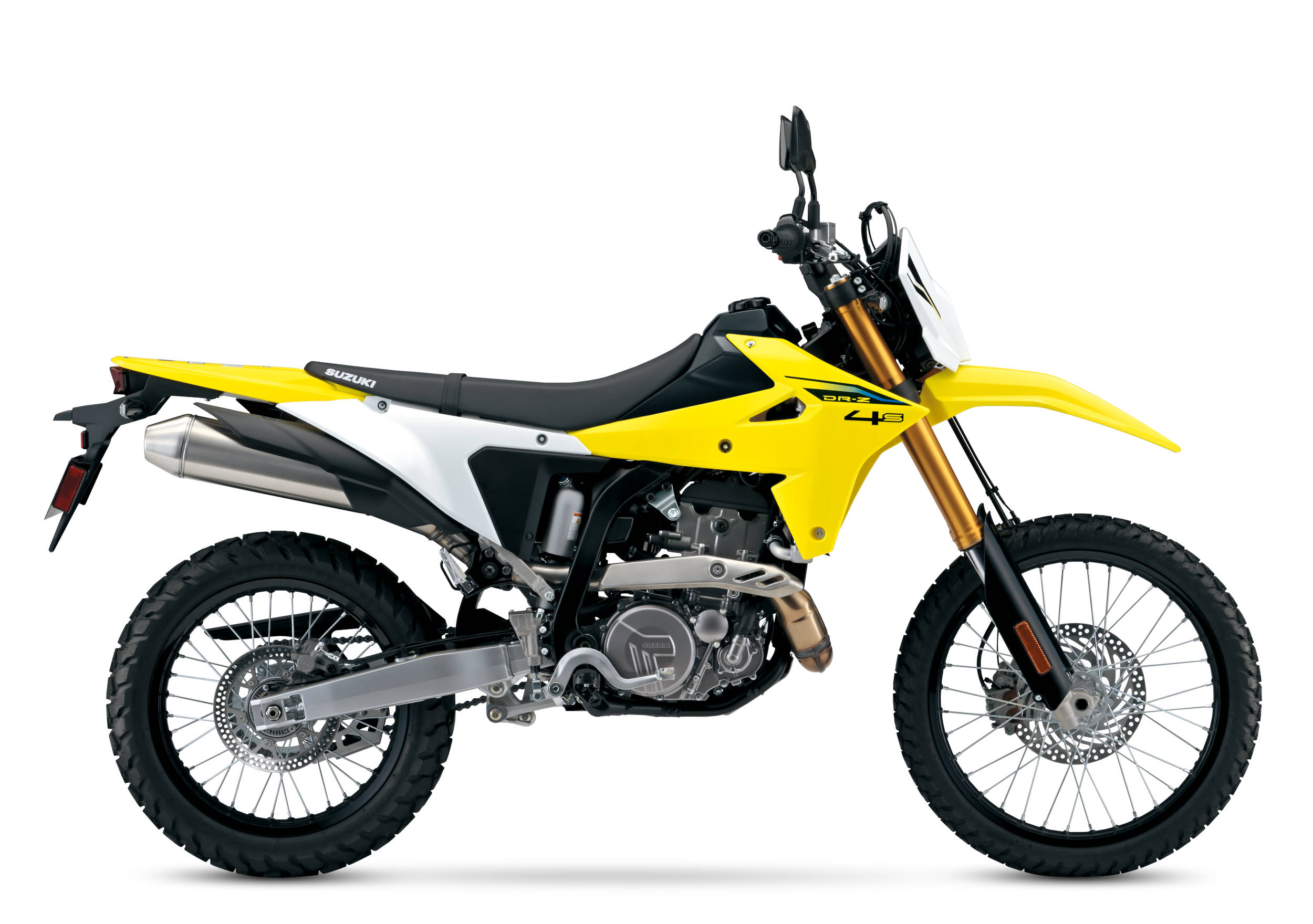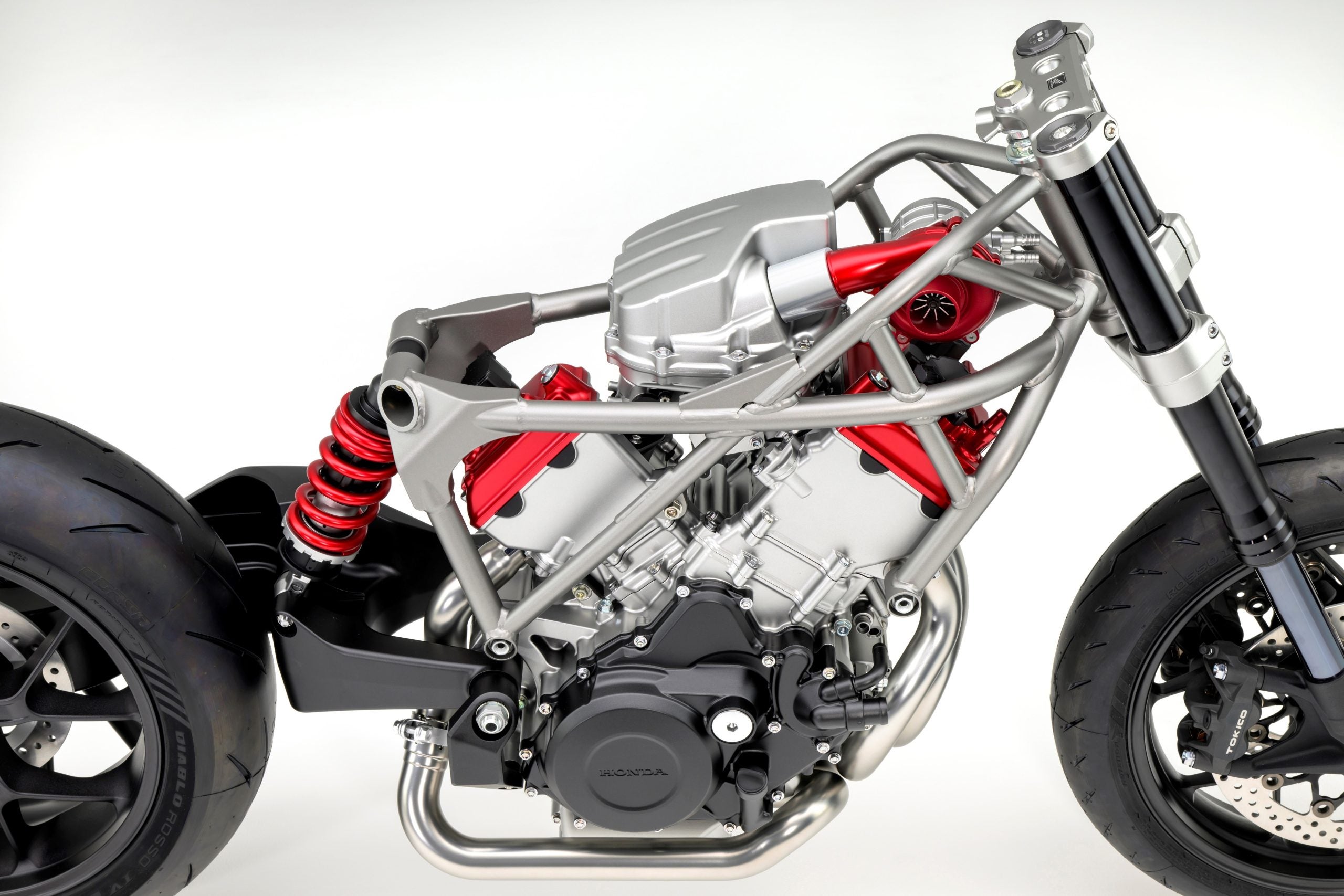Having your cake and eating it, too. Possible? If you look at several Honda automobiles, the use of cylinder deactivation allows high performance when you want it, and economy when you need it. This is a strategey that Honda is expected to employ on several future motorcycle models, including those incorporating large displacement v-4 powerplants.
Cylinder deactivation may be an attractive feature and a strong marketing weapon in the automobile world, but will it make a difference for Honda in the U.S. motorcycle market? Traditionally, Americans have not been too concerned about motorcycle fuel efficiency for two reasons. Even high performance motorcycles tend to get 30 mpg, or more, and U.S. gasoline prices have traditionally been far below those in Europe and other parts of the world. Economic conditions in the United States are far from normal, however, and U.S. consumers can be expected to become significantly more interested in the efficiency of their transportation devices.
That efficiency relates not only to mpg, of course, but acquisition cost. If the first Honda v-4 model indeed features a 1200cc displacement, it will be a high dollar motorcycle, and the gas savings associated with cylinder deactivation probably won’t be much of a factor for most U.S. purchasers considering a bike costing considerably more than $10,000.
MD Readers Respond:
- If you can stand one more comment:
The only way this technology is appealing is if Honda can introduce it without impacting driveability. I know a lot of former VFR owners who’ve gone to other makers because VTEC introduced cost, complexity and quirky power delivery without any real (perceived) benefits.
There are entertaining bikes that get 50mpg without the complexity and cost, and it’s only if the new VFR beats them in some meaningful way that I think you’ll have people lined up to buy. Jeff
- Yes it’s true that “gas savings associated with cylinder deactivation
probably won’t be much of a factor for most U.S. purchasers”. In fact
fuel efficiency isn’t much of a factor in motorcycle purchases, but you
moto-journalists could do a lot to improve that. I did a comparison of
my FJR1300 and my 1.8T Passat. If the FJR engine were as efficient as
the Passat engine, i.e. delivered the same horsepower-hours per gallon
of fuel, it would get 70mpg…instead of the 40mpg it actually gets.
And the Passat doesn’t have any flat-spots or quirks in it’s power
delivery. There’s absolutely no reason, technical or economic, that
modern fuel-injected motorcycle engines should not be a efficient as
automobile engines. It’s almost criminal the way motorcycle
manufacturers ignore fuel mileage. And one of the reasons they get away
with this is that moto-journalists never mention fuel mileage as a
consideration in their evaluations. You guys could easily shame the
manufacturer’s into providing decent efficiency if you reported it the
way you do performance. Brent - But still, better MPG is just…. better. If the new VFR is a 1200, it
would be nice to get 50 MPG (or better?) just for the sake of range.
That’s a solid 200 miles on a 5-gallon tank in cruise mode. I wish the
bike makers would use the fuel injection and displacement systems to
give riders better fuel economy as well as different “engine modes”
like the Suzukis have now. A 600cc sport bike with a wide range of
drive modes could be a solid commuter if it got 50mpg in town in a low-
power mode when the speed limit is 35 in clogged traffic, etc. Full
power just a push away? that would be sweet. I’ll be we see it. Bill - Thank you for producing an informative website. MotorcycleDaily.com is the home page on my computer.
I am a rider who is interested in a more efficient motorcycle, even though I plan on spending more than $10k on my next bike (most likely the Honda V4…I’ve already told my dealer to put my name on the first one they get. Although I’m also excited to see what the Ducati Multistrada and Triumph Trophy sport-tourers will be like as well).
While I get pleasure from high performance in my bikes it also pleases me when I am being fuel efficient. And being able to have both in one vehicle is very attractive to me.
The gas savings associated with cylinder deactivation could be quite significant for someone putting lots of miles on a cross country sport-tourer.
Thanks for keeping me informed! Walt
- Cylinder deactivation is not unique to Honda, it started in the late 70’s with GM. GM used a system that allowed the valves to remain open using the cylinder to become an air pump, the system was called a 4,6,8 but was too rough in application. The advent of computers in automobiles has allowed the process of deactivation to vastly improve. Robert
- Doesn’t the new Harley Davidson Ultra Classic cuts the rear cylinder at stops? Something about keeping heat away from the rider/passenger and improved cooling? But I would guess this would at least improve the carbon foot print by cutting fuel consumption when you are effectively getting zero miles per gallon.
For touring bikes mileage is still an issue despite the large sticker price. And if my ’02 Kawi ZX-12R got better mileage than my wife’s 2009 Toyota Corolla, maybe she wouldn’t rag on me about having to fill it with Premium gas. David
- I think perhaps you underestimate how important fuel mileage is to the sport touring and touring crowd. It’s a top 5 consideration for me when making a purchasing decision and I know that to be the case for many others in the long distance riding crowd.
For the touring or LD rider, the holy grail is 300 miles per tank. Unfortunately, there are precious few bikes besides the R1200GS Adventure that can manage that. Bikes like the R1200RT and FJR1300 come close and that’s one reason they’re so well represented in the iron butt community.
It’s a continual source of frustration to us that more manufactures don’t sell bikes with decent range (nor the seats to go along with it). Oh well. As long as the bar-hopping cruisers and wheelie-popping squids dominate market share here in the US, those of us that actually ride will have to make due. Todd
- I guess I don’t see a good reason for cylinder deactivation. I can
easily get 45+ mpg from my Busa when riding it with a reasonable amount
of restraint.Typical Honda, they try to make everything more complicated than it
needs to be. Adding VTEC to the VFR just about ruined that bike. The
VFR 750 used to be the Motorcycle tester’s favorite all around bike.
The VFR 800 should be even better, but it’s not even close.When Kawasaki brought out the ZX14 and the C14, they configured the
secondary butterflies to open slowly to soften the power delivery some.
The first thing many owners do, is remove the secondary butterflies, and
re-map the injection. They seem happy with that hack, but I’ll bet
that it is killing both fuel economy and emissions.Why don’t the manufacturers just configure two different fuel and
ignition maps? You can have a power map, and an economy map.
Instead of the switch like Yamaha and Suzuki put on their liter bikes
that controls power, you could control economy by changing the air/fuel
ratio and ignition timing. It’s got to be better than trying to sell
an overweight 1200 that sometimes runs and sounds like a 600 twin. Mike - If cylinder deactivation does not lower the engine rpm on the highway,
it will not have much effect, because internal engine friction is
primarily due to metal rubbing against viscous lubricant rubbing
against metal, and the only practical way to reduce the associated
amount of energy is by reducing the engine speed. Thus, with or
without cylinder deactivation, the intended effect begs for a really
tall overdrive that permits the engine to operate at very low rpm on
the highway, with the throttle held fully open to compensate. The
intended effect also begs for the amount of work that the engine can
perform per each rotation to be made greater at lower engine speed,
i.e., for the torque peak to occur at lower engine speed. Presently,
most sport-touring motorcycles do not have an adequate over-drive
gear, even the ones that have six speeds. At realistic highway
speeds, the engine is typically spinning at a much higher rpm than is
desirable for fuel economy, while using the tallest gear and with the
throttle just barely open. This has never made good sense, and the
apparent explanation has to do with the practical limit on the number
of gearing ratios and the preference for close spacing of the ratios,
for uniformity in acceleration through the gears. A pragmatic
approach to alleviating the natural tradeoffs is the use of variable
valve timing, which, all else equal, allows a given measure of torque
to be achieved at lower engine speed, and allows for broader spacing
of the gear ratios, in turn lowering the rpm at highway speed. The
point I am trying to make is that whereas the actual effect of
cylinder deactivation probably won’t amount to much, the same is not
true of the actual effect of variable valve timing. Cylinder
deactivation has been mentioned in connection with the new Honda V4,
but not much has been said about variable valve timing. Perhaps this
is taken for granted? Thomas - One small negative issue with cylinder deactivation is the sound it makes. I have an ’06 Doge Charger with the 5.7 hemi that deactivates 4 cylinders when cruising which really helps the mpg…. but Dodge spent a lot of time developing a muffler system that sounds good in both modes…. of course it wasn’t loud enough for me so I installed an aftermarket system that sounds great in 8 cyl mode but not so good in 4 cyl mode. Why I bring this up is people love to customize their bikes with the exhaust being one of the first choices of most… I think people will hate the sound of their bikes with the aftermarket exhausts on when they go to deactivation mode!! Just food for thought …. Randy
- But if the bike becomes highly desirable, in the same relative price league as the competition, suffers few compromises PLUS offers better economy which bike might you choose. With all that maybe the benefits of cylinder deactivation will tip the scale in Honda’s favor? We’ll have to wait and see. Rick
- When cylinders are deactivated does the engine vibration increase from
fewer/uneven power pulses? Just Curious. Brad

